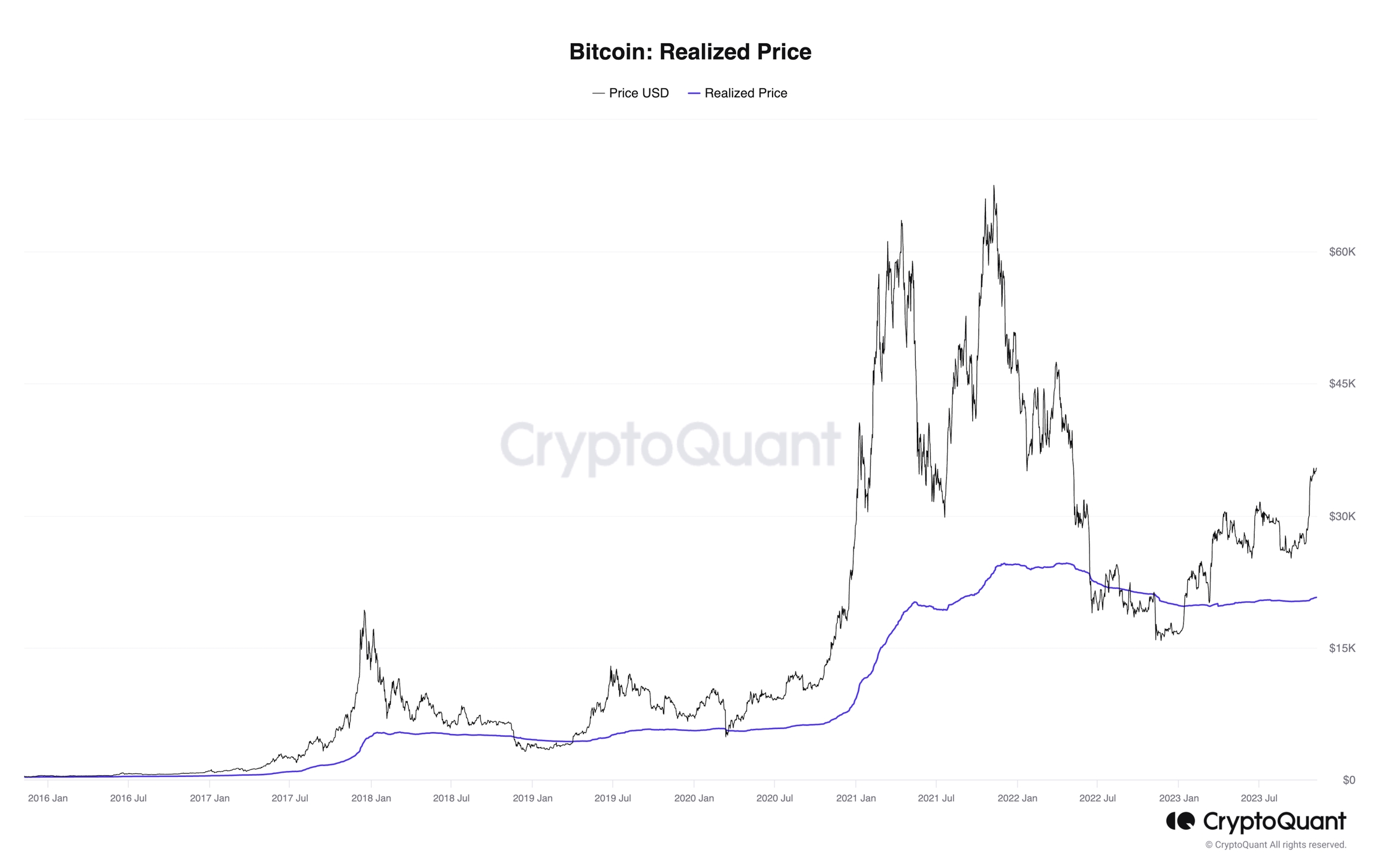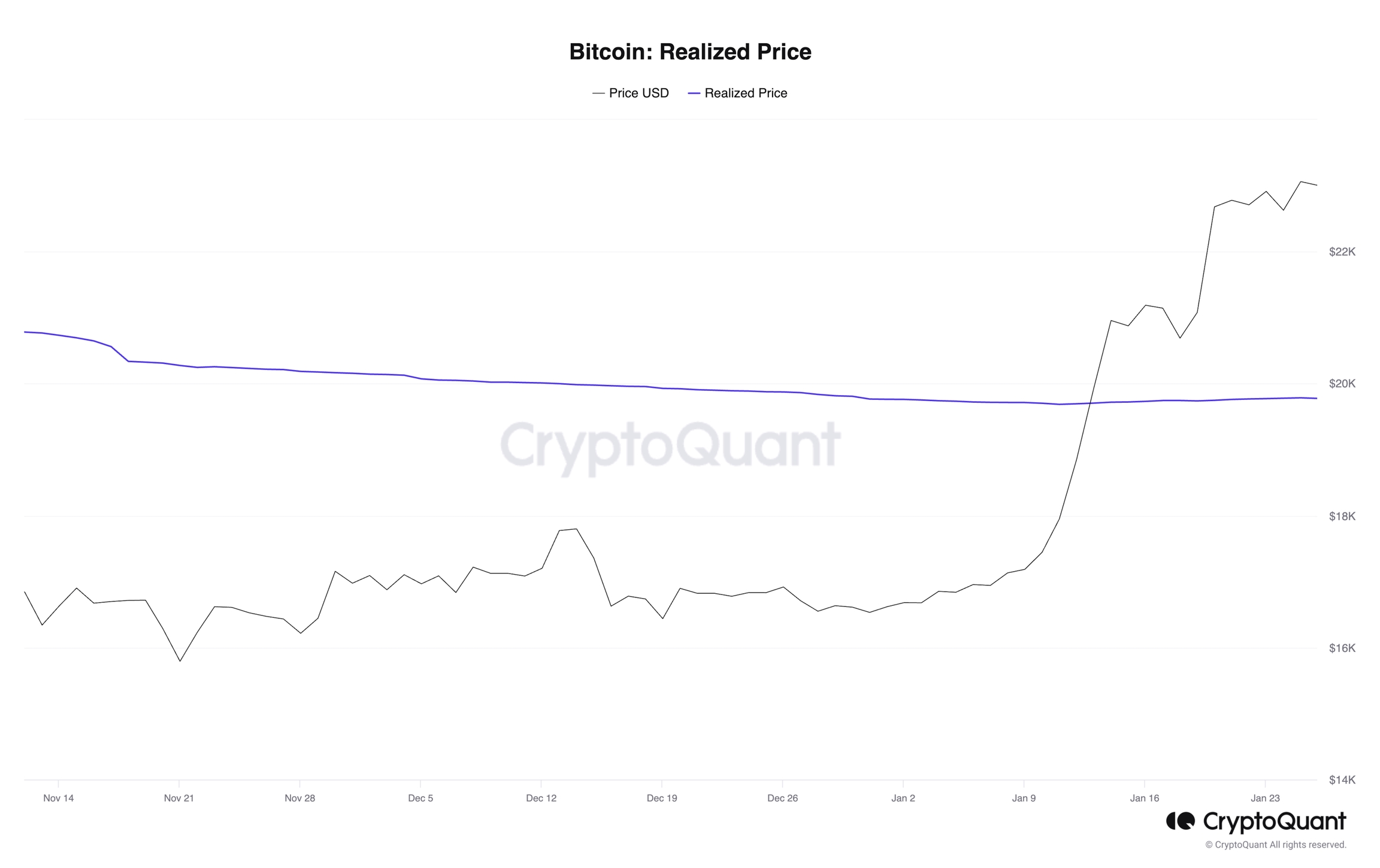Realized Price
Realized Price is calculated as Realized Cap divided by the total coin supply.
Definition
Realized Price is calculated as Realized Cap divided by the total coin supply. It measures the average price weighted by the supply of what the entire market participants paid for their coins. It can be interpreted as the on-chain support or resistance price.
Understanding Realized Price

Understanding Realized Price is pivotal for anyone involved in on-chain analytics. At its core, Realized Price is a metric that provides insights into the actual market conditions and the average purchase price at which specific groups of cryptocurrency assets were acquired.
Realized Price is derived from the aggregation of historical transaction data. It's a sophisticated metric that takes into account the varying prices at which each unit of a cryptocurrency was bought. This differs from the simpler Market Price, which only provides a snapshot of the current price based on the most recent trades. In essence, Realized Price digs deep into the entire history of sales of a cryptocurrency, offering a much broader perspective on its value.
This metric reflects the average price at which investors have purchased a specific cryptocurrency, creating a more accurate representation of the market. In contrast, Market Price is influenced by current market trends and can sometimes be misleading, especially during periods of extreme volatility.
Realized Price provides a historical view of the cryptocurrency's price movement, highlighting the levels at which investors have bought and sold, which can be instrumental in predicting market trends. It's a reflection of the "realized" value of the currency in circulation, as opposed to the "theoretical" value indicated by Market Price.
Realized Price vs. Market Price
Realized Price and Market Price are two distinct metrics, each offering unique insights into the crypto market. Understanding the differences between the two is vital for anyone looking to make informed decisions in the crypto space.
Market Price is the most straightforward of the two. It represents the current price of a cryptocurrency based on the most recent trades. It's what you see on cryptocurrency exchanges and what the majority of investors reference. However, it's essential to remember that Market Price is heavily influenced by the current supply and demand dynamics and can fluctuate rapidly.
Realized Price, on the other hand, provides a historical view of a cryptocurrency's average sale price. It considers the prices at which each unit of a cryptocurrency was acquired, leading to a more precise representation of the market. This history-based approach means that Realized Price is less susceptible to short-term price swings compared to Market Price.
While Market Price can be affected by factors like market manipulation and speculative trading, Realized Price is more resistant to such influences. As a result, Realized Price is often considered a more reliable metric for understanding the "real" value of a cryptocurrency, which can be invaluable for investors and analysts seeking a deeper comprehension of the market.
Bitcoin Realized Price

Realized Price, an often-overlooked metric, is a critical tool for Bitcoin investors. During turbulent market periods, it acts as an early warning system. When the Market Price falls below the Realized Price, it's a sign that, on average, Bitcoin holders are facing paper losses.
Value investors see this period as an opportunity to accumulate more Bitcoin. This accumulation phase often paves the way for a bull market as the Market Price rises above the Realized Price, as shown in the Bitcoin: Realized Price Chart.
This pattern has held true throughout Bitcoin's adoption cycles to date, highlighting the enduring importance of the Realized Price metric for cryptocurrency investor
Use Cases of Realized Price
Realized Price has several noteworthy use cases in the world of cryptocurrency analytics. Here, in review, are a few key applications:
Market Valuation
Realized Price can provide a more accurate valuation of the cryptocurrency market, helping analysts assess whether the current market conditions are overvalued or undervalued.
Investment Decisions
Investors can use Realized Price to make more informed decisions. It can help identify potential buying or selling opportunities based on historical trends, enabling investors to time their moves more effectively.
Market Cycles
Realized Price can be a valuable tool for tracking market cycles. Understanding the phases of accumulation, distribution, and recovery can assist investors in adapting their strategies to prevailing market conditions.
Risk Management
Realized Price is instrumental in managing risk. By assessing the average price at which other investors entered the market, it's possible to gauge potential price levels where sell-offs or corrections may occur.
Analyzing Network Health
Realized Price can provide insights into the health of a cryptocurrency's network. Fluctuations in Realized Price can indicate changes in network dynamics, which can influence investor behavior and may impact overall market sentiment.
End Notes
By leveraging the Realized Price metric, investors and analysts can make more well-informed decisions, improve their risk management, and develop a deeper understanding of market dynamics in the ever-evolving world of cryptocurrency.
Last updated
Was this helpful?